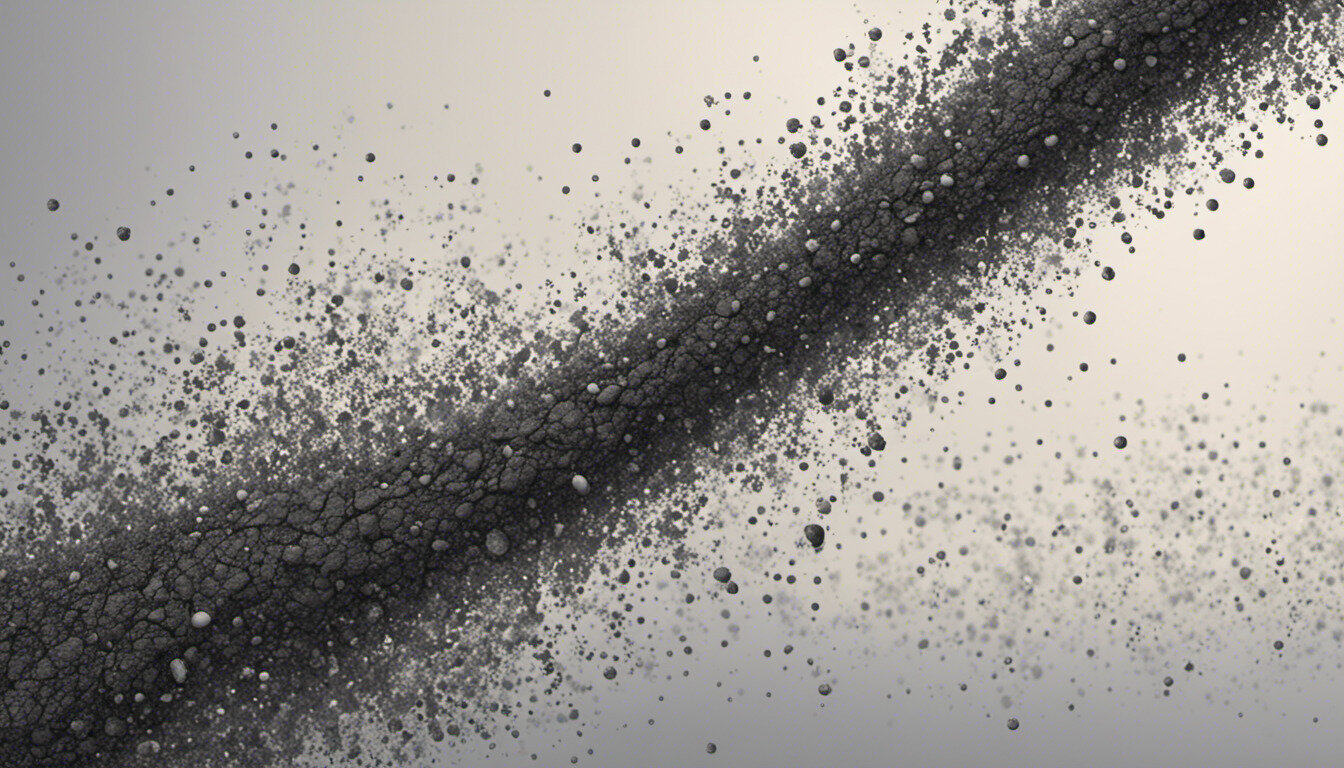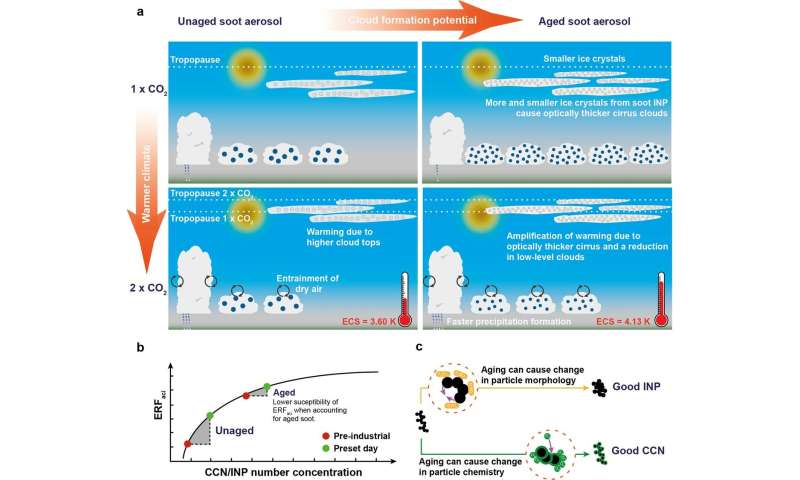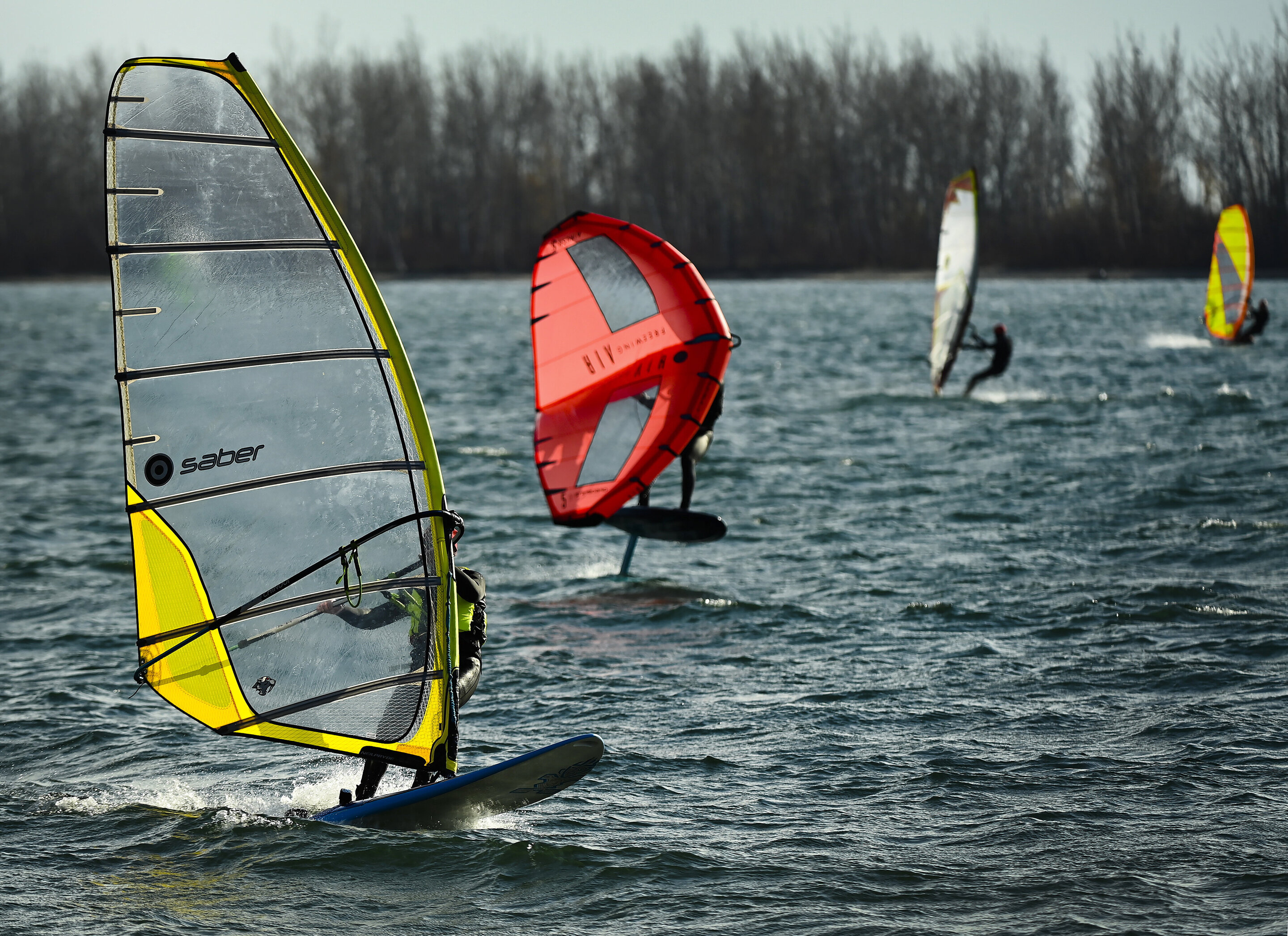#Soot particles influence global warming more than previously assumed

“#Soot particles influence global warming more than previously assumed”

A team of researchers from ETH Zurich has for the first time used simulations on the CSCS supercomputer Piz Daint to investigate how certain aging mechanisms of soot particles in the atmosphere affect cloud formation. The results show that the influence of ozone and sulfuric acid on soot aging alters cloud formation and, ultimately, the climate.
Burning wood, petroleum products or other organic materials releases soot particles into the atmosphere that consist mainly of carbon. This soot is considered the second most important anthropogenic climate forcing agent after carbon dioxide. In the atmosphere or as deposits on snow and ice surfaces, soot particles absorb the short-wave radiation of the sun and thus contribute to global warming.
In the atmosphere, soot particles also have an indirect effect on the climate by altering the formation, development and properties of clouds. A research team led by Ulrike Lohmann, professor at the Institute for Atmosphere and Climate at ETH Zurich, has now for the first time investigated how two specific types of soot particles influence clouds and, in turn, the climate: on the one hand, soot aerosols that age due to ozone and, on the other, those that age due to sulfuric acid.
Soot chemistry changes cloud formation
“Until now, it was assumed that these two types of soot aging had little effect on cloud formation and climate,” says David Neubauer, scientific programmer in Lohmann’s research group. However, the results of the simulations now carried out on the CSCS supercomputer Piz Daint paint a different picture.

When soot particles combine with ozone or sulfuric acid, their physical and chemical properties change, write the researchers in their study recently published in the journal Nature Geoscience. Soot particles aged by ozone form condensation nuclei in lower layers of the atmosphere, which help clouds to form. In higher layers of the atmosphere, however, the soot particles aged by sulfuric acid act as ice nuclei and help cirrus clouds to form.
The team simulated how the differently aging soot particles influence cloud formation, and consequently the climate, from pre-industrial times to the future. In these simulations, the development of the aerosol particles is coupled to the physics of cloud formation in an interactive computation. This is complex and requires more computing time than conventional climate simulations.
The researchers made clearly defined assumptions for their calculations by describing the aging state of the soot particles, depending on temperature and ozone concentration. Both factors have a significant influence on aging: For soot to age rapidly through ozone, the temperature and ozone concentration must be high. For the ability of soot to act as an ice nuclei by sulfuric acid aging, a low temperature plays the decisive role.
Changed cloud formation leads to warming
Simulations of ozone-aged soot show that when the carbon dioxide content of the atmosphere doubles compared to the pre-industrial era, fewer low clouds form. Considerably more cloud droplets are initially formed by ozone aging of soot. However, their high concentration leads to more cloud top cooling causing more dry air being mixed in from above. “These clouds then evaporate more quickly, especially in a warmer climate,” explains Lohmann. “In a warmer climate, the air mixed in also has a lower relative humidity”. Due to the faster evaporation, less low-lying clouds remain, and more short-wave radiation reaches the earth and warms it.
The soot particles aged by sulfuric acid, on the other hand, cause more ice crystals to form and make cirrus clouds optically thicker, i.e. they are less permeable to radiation. They extend as far as the tropopause, which is located at an altitude of 10 to 18 kilometers, and also linger longer in higher regions of the atmosphere. As a result, cirrus clouds absorb more of the long-wave thermal radiation emitted by the Earth and allow less of it to escape into space. The warming effect of cirrus clouds increases and exacerbates global warming: When the carbon dioxide content of the atmosphere doubles compared to pre-industrial times, both types of soot aging together lead to a 0.4 to 0.5 degrees C increase in global warming. As a result, the water cycle will further accelerate and global precipitation will further increase, the researchers write.
Future studies, which include aerosols from forest fires, aircraft or car engines, and combine field and laboratory measurements with simulations, could give an even clearer picture of the effects of soot aerosols. They could also help to develop strategies to reduce emissions. “This would not only benefit the climate and air quality, but also people’s health,” emphasizes Neubauer.
Clouds and soot: Understanding air pollution and atmosphere interactions
Ulrike Lohmann et al. Future warming exacerbated by aged-soot effect on cloud formation, Nature Geoscience (2020). DOI: 10.1038/s41561-020-0631-0
Provided by
Swiss National Supercomputing Centre
Citation:
Soot particles influence global warming more than previously assumed (2020, October 29)
retrieved 29 October 2020
from https://phys.org/news/2020-10-soot-particles-global-previously-assumed.html
This document is subject to copyright. Apart from any fair dealing for the purpose of private study or research, no
part may be reproduced without the written permission. The content is provided for information purposes only.
For forums sites go to Forum.BuradaBiliyorum.Com
If you want to read more Like this articles, you can visit our Science category.



